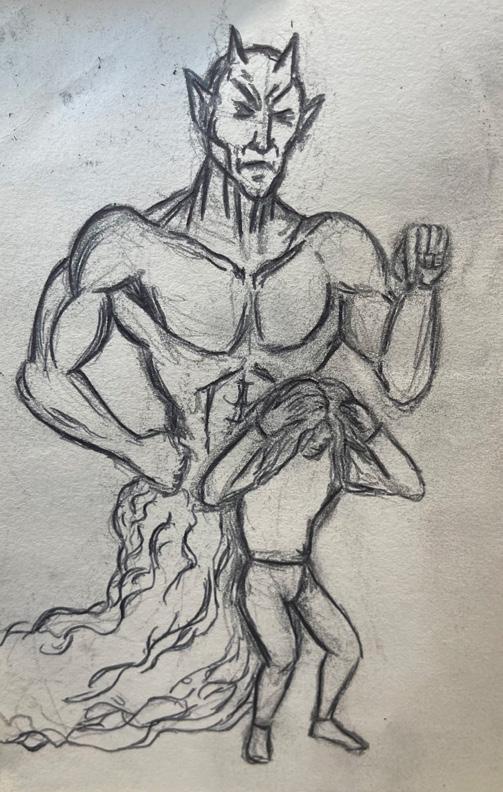
3 minute read
Family Love in the Wild Kingdom
By Vicki Gies
I’ve observed animals all my life. I’ve also observed animal families. Some animal families will allow humans to coexist with them. It took about two months of living in the woods before they started to trust me.
One family in particular started coming around soon after I moved into the woods: the Raccoon Family. I named all the animals that I got to meet, and I started with the father and mother raccoons, Rocky and Rachel. I named their “kids,” or properly called “kits,” Ricky and Rhonda.
When the kits came around for a visit, I usually gave them a little snack. Sometimes they would take the treats right out of my hand. Of course, mama would always be watching. One night, one of the adult raccoons came into my tent and spent the night. I left the tent door open that night so that he or she could leave during the night and not feel trapped.
Another family that I met was the Mallard Family. The males had bright green heads and brown and white bodies. Mama Mallard was named Daisy, and she had dull, brown feathers. Although mallards can have a large number of offspring at one time, the family I got to know only had about seven or eight babies. I simply named them Darling Ducklings.
Sometimes I walked around the nearby lake to enjoy the sights and see what animals I could find. One time I walked out on a pier and heard splashing behind me toward the bank. When I turned around, I saw a mama duck chasing a snake away from the bank where her ducklings were all huddled together. It took about three attempts before the snake finally gave up and left the ducklings alone.
And then there were those green parrots. They are actually called Monk Parakeets. They are fascinating to watch and are definitely master builders. They have the most unique houses for their families. One house can have anywhere from eight to 10 compartments of families. The Monk Parakeets enter their homes from the bottom of the house. The mother and father Monk Parakeets I named Paula and Pauly. I never saw their babies up close because their home was so high off the ground.
I certainly cannot neglect to mention the fierce family of wild hogs! There were three of them, and I definitely did not get close to them. Thankfully, they did not see me!
Finally, I observed the Goose Family. Father Gander was George; Mother Goose was Georgia. The male goose had the tedious task of sitting, squatting, or guarding the nest, while the female went to get food for the family. Humans cannot get close to the nest, especially if the nest has eggs or goslings. I remember George becoming quite angry on one occasion. Geese are known to attack people with their very sharp tooth-like cartilage if they feel threatened.
Observing all of these families has been a wonderful source of up-close entertainment and learning for me. Two things that I learned is that all the mothers took special care of their “children,” and family always comes first.
This story is dedicated to all the wonderful families in the Wild Kingdom.
Continued from page 4 provider has become engaged with them. The providers listen and explain a diagnosis, which a client may not have gotten before.
We appreciate being at The Stewpot because it is open to the public. It can be hard building a connection because you are vulnerable opening up to someone. Being able to stay with the treatment team is important.
Triska: There are many conversations around homelessness that get attached to stories about mental health and substance abuse disorders. The naked eye often can see them in play. But what is not being factored in is that people in these situations are not having unique experiences. Depression, anxiety, and substance abuse disorders are found in people with homes, too.
What is unique is the other factors that lead to their homelessness. We want to make sure that we are not stigmatizing mental health and substance use disorders. But these don’t lead to homelessness. So many factors lead to homelessness, and mental health is part of this human life. We like to say that mental health is physical health.





